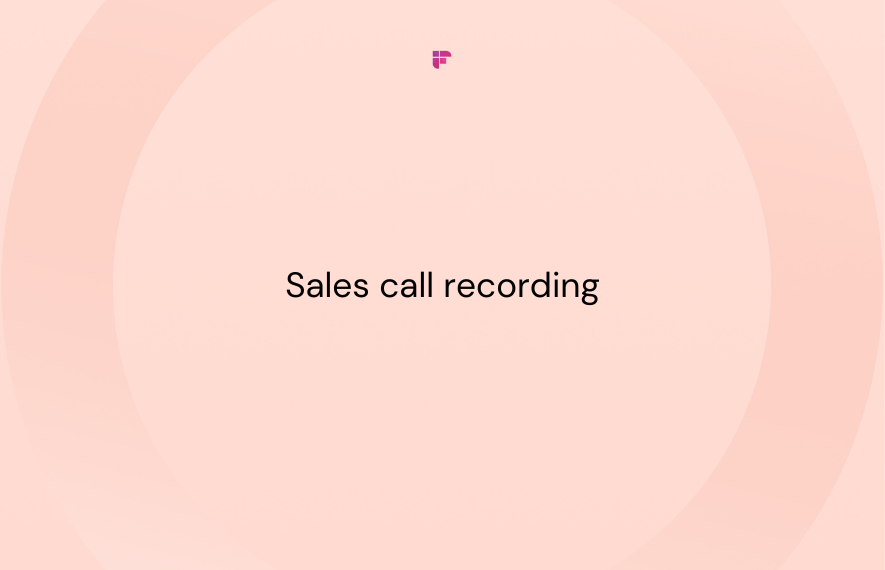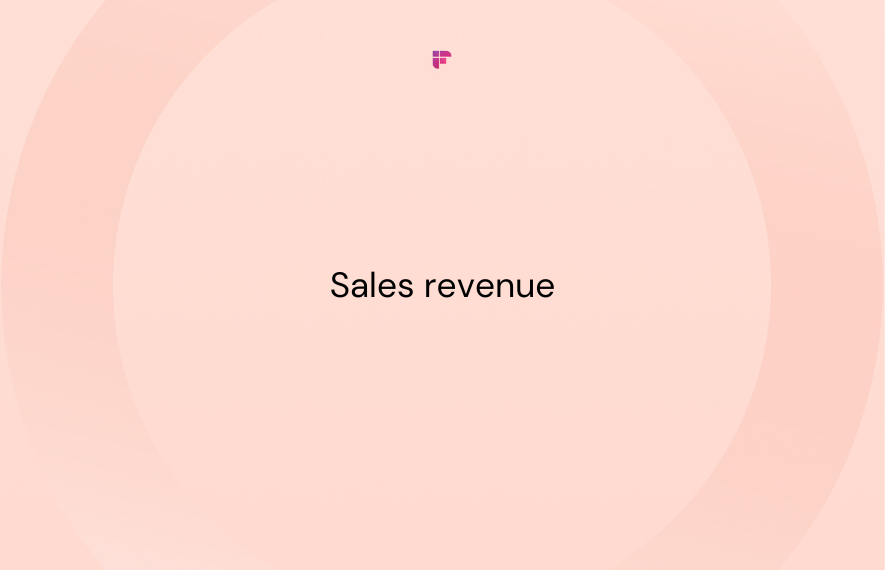In sales, success isn't merely about making pitches and closing deals. It also deals with understanding the psychology of buyers, fostering strong client relationships, and mastering a methodology that stands the test of time.
One popular methodology that ticks all these boxes is the Sandler sales method, also known as the Sandler selling system. Renowned for its customer-centric approach, this 56-year-old method will help your team elevate its sales game.
So, how can you effectively implement this method and unlock its full potential for your team? Well, that's what this blog post is here to explore.
In this guide, you'll discover the ins and outs of the Sandler sales method and see how you can use it to excel in your sales endeavors.
What is the Sandler Sales method?
Developed by David Sandler in 1967, the Sandler selling system is a sales approach that aims to break away from traditional, pushy sales tactics. It revolves around the concept of a mutually beneficial, collaborative, and transparent sales process.
The method is based on the idea that sales success doesn't merely result from convincing clients to buy but from helping them recognize the value and benefits of your product or service.
Instead of the typical back-and-forth dance where both buyers and sellers end up frustrated, it offers three stages designed to make things smoother:
- Building and sustaining the relationship: This involves taking the lead in the buyer-seller interaction, setting clear expectations, and establishing an open and honest relationship.
- Qualifying the opportunity: No point in wasting time on leads that won't go anywhere, right? In this stage, the salesperson determines if the prospect's needs, budget, and decision-making process align with their offer.
- Closing the sale: If the prospect is a good match, the salesperson gives a laid-back presentation, confirms the agreement, and sets expectations for what comes next — delivery and referrals.
The bottom line? The Sandler method is all about making sales a win-win for everyone involved.
The 7 steps of the Sandler Sales method

When shaping this selling system, David Sandler chose the metaphor of a submarine. Why? Well, he drew inspiration from World War II movies, where submarines operated stealthily beneath the surface to avoid detection.
In the same way, professional salespeople, like submariners, should run silent and run deep. They are to operate discreetly, focusing on what happens beneath the surface of a sales interaction.
Overall, the Sandler method is based on the belief that successful selling requires a consistent and disciplined approach grounded in objective decision-making.There are seven compartments of the Sandler Submarine, which represent the steps of the Sandler selling system.
Let's check them out:
1. Bond and establish rapport with your prospect
Start by getting to know your prospect on a personal level. It shouldn't be just about business — you need to build a genuine connection and make them comfortable.
Like a sailor on a submarine navigating through uncharted waters, forging this initial bond is crucial for a smooth sales journey.
Some great ways to establish trust between you and a prospect include using their name (and pronouncing it right), speaking their language, adding humor, clarifying their pain points, and asking meaningful questions.
Here are five possible questions you can ask to build rapport:
- What's the most exciting project you've taken on at work recently?
- How would you describe your current business challenges and goals?
- Can you share some insights into your company's culture and values?
- How do you typically like to approach new business relationships?
- Do you have any specific communication preferences or cultural nuances we should be aware of to enhance our collaboration?
2. Set clear expectations
Unwanted surprises during a sales process can jeopardize a deal or harm the relationship between you and a prospect.
To ensure this doesn't happen, the Sandler sales method recommends using Up-Front Contracts (UFCs) to ensure clarity before each meeting.
Each UFC should ideally cover five elements:
- The objective of the meeting, contact, or future action
- The prospect/client’s agenda and expectations
- The sales professional’s agenda and expectations
- The date, location, and duration of the meeting
- The expected outcome of the meeting or interaction
3. Identify the prospect's pain
The focus shifts to understanding the prospect's pain points and challenges. Instead of leading with a product or service pitch, the salesperson seeks to uncover the prospect's needs, problems, and goals.

This step involves asking probing questions to identify the areas where the prospect is experiencing discomfort or dissatisfaction.
- What are the primary challenges or obstacles your team is currently facing?
- In your opinion, what are the root causes of the issues you've mentioned?
- How have these challenges impacted your business or team's performance?
- Can you provide examples of specific instances where these challenges were particularly evident?
- What steps have you taken to address these challenges in the past?
- How would overcoming these challenges positively impact your organization?
- Have you ever considered giving up on solving this issue?
4. Uncover the prospect’s budget

Did you know that at least 50% of your prospects aren't a good fit for what you sell? That's why this fourth step of the Sandler sales method is so important.
Here, your sales reps should focus on determining whether the prospect can invest the necessary resources (time, money, and effort) to address the identified problems.
Openly discussing budget considerations will ensure that both parties are on the same page regarding the financial aspects of the potential deal.
If you're trying to understand the budget of a prospect, here are some questions you can ask:
- How does your budgeting process typically work for projects like this?
- How much is your business currently spending?
- Can you give me a sense of the financial constraints we should keep in mind?
- Are there any potential funding sources or budgetary approvals we must consider?
- Who controls the budget for this kind of issue?
- What factors will influence your decision-making regarding the budget?
5. Identify the decision-making process
This step involves understanding how decisions are made within the prospect's organization, the key decision-makers, and the criteria they use to evaluate potential solutions.

Understanding the decision-making dynamics will help you tailor your approach, navigate the complexities of the prospect's organizational structure, and increase your chances of closing the deal.
- Who else in your organization typically gets involved in decisions like this, and how long does it take?
- Can you walk me through the decision-making process within your team/company?
- Are there any influencers or stakeholders we should be aware of?
- How can we ensure all relevant stakeholders are on board with the decision?
- What factors are typically considered when making decisions of this nature?
6. Move into the fulfillment phase
Once you've effectively identified pain points, uncovered budget constraints, and understood the decision-making process, it's time to move into the closing phase.
Closing the sale involves two components: fulfillment and post-sale (we'll talk about the latter in the next section.)
In the fulfillment phase, you're to present your solution in a way that directly addresses the prospect's identified needs at an acceptable price.
The focus is on demonstrating how the product or service can alleviate the prospect's pain and meet their specific requirements.
The fulfillment phase consists of four elements to secure a signed agreement:
- The review: This involves revisiting the pain points, budget considerations, and decision-making process. If everything remains consistent, you can proceed with the presentation based on the upfront contract. If not, you should address changes or, if necessary, reschedule the meeting.
- The presentation: Your aim is to focus on features and benefits that directly address the prospect's reasons to buy. Encourage the prospect to identify the most crucial issue and cover it thoroughly before moving on to the next.
- The close: If you've properly implemented the Sandler method, you should be able to close the deal with a "yes" from the prospect. You can assess the prospect's readiness on a scale of 1-10. If they're at 10, proceed. If not, identify and address any concerns they may have.
- The confirmation: Finally, ensure the prospect is comfortable moving ahead with the deal by clearly explaining the next steps.
Here are some questions you can ask that may increase your chances of closing a deal:
- Based on what we've discussed, would you like to try out a demo?
- Are there any specific features or aspects you'd like to explore further?
- What concerns or reservations do you have about moving forward with our solution?
- Can we discuss any customization or additional support you might need?
7. Confirm the post-sell process
The final step of the Sandler sales method involves ensuring customer satisfaction and managing expectations after the sale. Remember: the post-sell phase is crucial for maintaining customer loyalty and generating referrals.
It includes discussing ongoing support, addressing any remaining concerns, and laying the foundation for a long-term, mutually beneficial relationship.
Asking questions like these can help you achieve this:
- How do you feel about the solution now that we've implemented it?
- Are there any challenges or issues that have come up since we started?
- What additional support or resources can we provide to ensure your ongoing satisfaction?
- Have you seen any positive impacts or changes?
- Are there any areas where we can improve or enhance our partnership moving forward?
Why is the Sandler sales method different?

The Sandler sales method distinguishes itself from other sales methodologies as it prioritizes creating strong and value-driven relationships with prospects over making a sale.
It differs, for example, from the Challenger sales model, which focuses on a salesperson's ability to control and reshape a sales conversation.
Instead, the Sandler method emphasizes understanding the prospect's pain points, fostering open communication, and establishing a mutual commitment to the sales process. In this method, sales reps adopt the role of consultants rather than traditional salespeople.
Since the focus falls on establishing trust rather than simply promoting a product, the sales rep transforms into a reliable advisor capable of addressing the prospect's challenges to deliver a tailored solution.
This shift from a sales-centric to a consultative approach enhances the relationship between the salesperson and the prospect, fostering a more enjoyable and effective sales process.
How to implement the Sandler Sales method
If you feel the Sandler method would be a good fit for your company, great! But the next big question is, how can you successfully implement this system to reap its benefits?
Here are two ways you can do so:
1. Using the David Sandler sales training methodology
Sandler sales training is a comprehensive, hands-on program that will transform how your sales team approaches selling and leadership.
Whether you're working in a traditional office or a tech-savvy setup, Sandler sales training has online courses, assessments, and tools to fit your unique needs.
The training covers essential aspects of sales, leadership, prospecting, expanding accounts, and personal and professional growth.
With this program, your sales team can solve common sales challenges such as finding and closing profitable deals, helping prospects navigate the buyer journey, managing discounts and concessions, and expanding accounts with customer success.
2. Leveraging Fireflies.ai
.png)
Another way to effectively apply the Sandler sales method in your sales processes is by using a tool like Fireflies.ai.
This powerful tool seamlessly integrates into your sales meetings to automate note-taking and saves transcripts of your discussions to review later.
This way, you can ensure that valuable insights about your prospects are accurately captured and stored.
Let's explore how Fireflies can help you get the most out of the Sandler method:
- Provides over 90% accurate transcriptions of all your sales calls in 60+ languages.
- Helps you extract insights from your meetings, analyze sales trends, and coach reps with 10+ metrics. For example, with sentiment analysis, you can easily identify buyer-ready prospects.
- Provides customizable and actionable summaries of your sales conversations with outlines, bullet-point notes, action items, clickable timestamps, and more.
- Allows you to search and quickly retrieve key information from your transcripts with AI Filters and Topic Trackers. You can use the latter to create custom topics and keywords specific to your industry or domain.
- Offers a GPT-4 powered bot, AskFred, that can answer questions, customize notes, and generate content with a click.
- Integrates with 40+ apps, including CRM and collaboration apps, to help you log your calls and transcripts under the appropriate contacts. This way, your team has more time to focus on more strategic tasks.
- Saves and organizes all your sales conversations and transcripts in a central location (Fireflies Notebook).
- Aids collaboration and sales coaching by allowing you to create soundbites of key meeting moments. You can also use Threads to leave feedback in your meetings.
- Offers a Playlist feature that helps you create a collection of soundbites from multiple calls in one place. With this feature, you can train your team by creating playbooks that contain best practices for the Sandler method.
- Provides Channels to help you organize your sales calls. This helps you categorize crucial information about your prospects, including their pain points and budget constraints.
- Takes your meeting security seriously: it keeps all your data encrypted at rest and in transit and is SOC 2 Type II, HIPAA, and GDPR compliant.
- Offers Private Storage to provide you with dedicated and isolated data storage for your organization
💡 Supercharge your sales process with Fireflies
Seamlessly implement the Sandler sales method, automate your meeting workflows, and achieve sales excellence.
In conclusion
The Sandler sales method is a game-changing strategy to set your team up for success.
By following the steps outlined in this guide, you can build long-lasting client relationships and close more deals.
And, with its powerful features, Fireflies provides your team with all it needs to succeed with the Sandler method.






